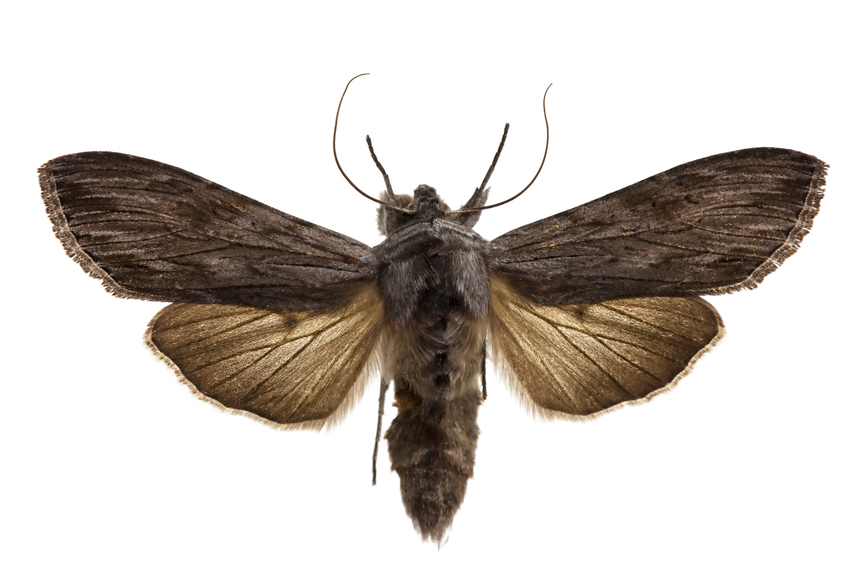|
|
mothsPest infestations can be challenging to handle on your own. Hiring an expert pest control firm like South Bend Exterminators is the practical way to address the issue. We offer effective and safe pest extermination services in South Bend. Among the well-known small insects, moths are probably the ones that cause the most damage. Moth larvae ruin woolly clothing. They consume it, causing hard-to-fix and frayed holes in precious garments. Therefore, it is vital to keep moths from nesting in your home. Call South Bend Exterminators to perform moth control if you notice a moth infestation.
How long do moths live in a house? Moths have a lifespan of two to four weeks to live in your house, taking them through the egg, larva, pupa, and adult stages. There are indoor moths that can eat clothes, mostly those made from animal fibers like silk, cashmere, wool, or fur, which are mostly materials that have keratin. Since only the larvae have mouth parts well developed to chew on fabrics, adult moths are less dangerous to your clothes. Where do moths come from? Different moth species exist, and they are typically active at night. The clothing moth causes the most destruction. When an adult moth flutters, it does not cause damage by itself. Yet it can leave between 150 and 200 eggs in a well-heated property. The problem arises from there—the eggs hatch. The larvae start feeding on fibers from woolen clothes. Moths can also feed on woolen carpets. What should I not do? Moths react to odors. They have a great sense of smell, generally directed to worn clothes. Worn clothes consist of nutrients for the larvae. Therefore, adult moths concentrate on odors like sweat, fat, and urine stains, and they leave their stains on them. It is therefore not advisable to leave worn clothes lying around or hanging in the closets. Moths also reproduce well in areas with moisture. Avoid placing wardrobes in somewhat damp environments. Furthermore, be careful as you air clothes when the weather is humid or in the evening. At these times, there is a high risk of taking moths into your house. |
How can I control moths?
To prevent moth infestations, clean your wardrobe regularly. Use the hoover, particularly in the wardrobe corners, and look for cobwebs. Cobwebs can be a sign of moth larvae. If there are clothes you do not plan to wear for a long time, place them carefully in tightly closed storage boxes or clothing bags.
Two main types of moths commonly require treatment in homes. They are fabric-infesting moths and food product moths. Specific treatment procedures can differ based on the moth's typical habitat and diet. However, the components of an efficient and effective treatment program closely follow that of any comprehensive pest management plan. When you have moth issues, South Bend Exterminators can perform a thorough inspection to identify the pest moth precisely. We can create an effective treatment plan to resolve the problem depending on our findings.
Our treatment plan can involve using pheromone-based moth traps that are ideal for determining the insect population size and development sites. We can also use non-chemical and habitat reduction treatments. They include techniques and methods that help reduce or eradicate the moths' ability to obtain water, food, and protected places to reproduce and live. Another option is using insect growth regulators. They work by interrupting and preventing the moths' ability to attain maturity. Our team can also use chemical products when non-chemical strategies cannot fully resolve the moth problem.
If you have a moth infestation, you must take steps to prevent more damage. South Bend Exterminators can help you limit the damage and provide great tips for preventing the moths from returning.
To prevent moth infestations, clean your wardrobe regularly. Use the hoover, particularly in the wardrobe corners, and look for cobwebs. Cobwebs can be a sign of moth larvae. If there are clothes you do not plan to wear for a long time, place them carefully in tightly closed storage boxes or clothing bags.
Two main types of moths commonly require treatment in homes. They are fabric-infesting moths and food product moths. Specific treatment procedures can differ based on the moth's typical habitat and diet. However, the components of an efficient and effective treatment program closely follow that of any comprehensive pest management plan. When you have moth issues, South Bend Exterminators can perform a thorough inspection to identify the pest moth precisely. We can create an effective treatment plan to resolve the problem depending on our findings.
Our treatment plan can involve using pheromone-based moth traps that are ideal for determining the insect population size and development sites. We can also use non-chemical and habitat reduction treatments. They include techniques and methods that help reduce or eradicate the moths' ability to obtain water, food, and protected places to reproduce and live. Another option is using insect growth regulators. They work by interrupting and preventing the moths' ability to attain maturity. Our team can also use chemical products when non-chemical strategies cannot fully resolve the moth problem.
If you have a moth infestation, you must take steps to prevent more damage. South Bend Exterminators can help you limit the damage and provide great tips for preventing the moths from returning.




